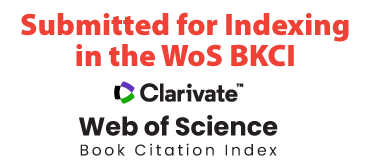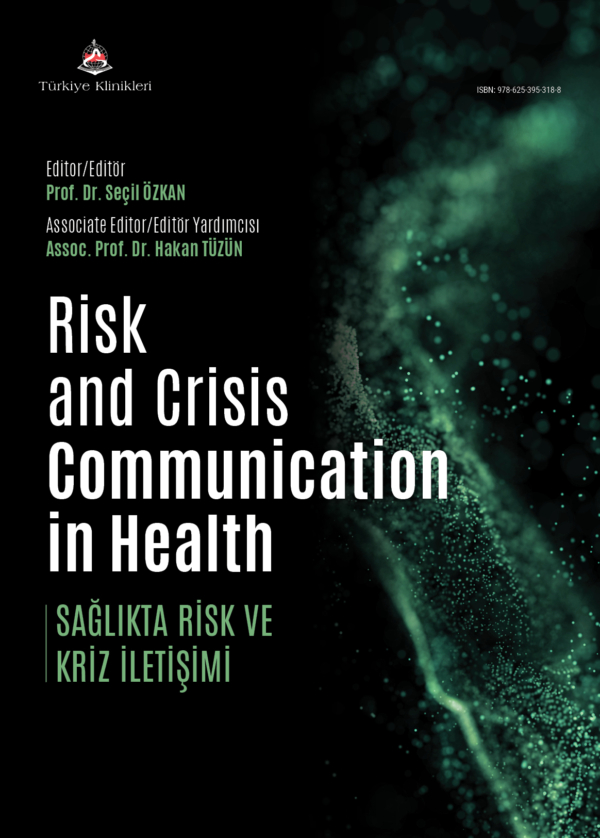The first quarter of the twenty-first century is behind us. Undoubtedly, the most important event that will go down in human history in the field of health for this period of time was the COVID-19 pandemic. In fact, there were some preparations for the risk of an influenza pandemic, but the pandemic emerged from another factor. This experience was a global reminder that, as has been the case throughout human history, it is possible at any time for risks to change from potential to actual.
Public health emergencies can occur not only in infectious disease outbreaks, but also due to many factors ranging from earthquakes to war, from migration waves to extreme weather events. When faced with public health emergencies, one of the indispensable tools in the set of instruments used for interventions is risk communication. When implemented effectively, risk communication serves as a fulcrum for communities and countries to increase their resilience in the face of emergencies.
Risk communication and crisis communication are two different frameworks used for different situations, although they encompass overlapping processes. Risk communication basically aims to organize communication activities aimed at preventing or mitigating anticipated risks from leading to a crisis. Crisis communication, on the other hand, is positioned as a framework that aims to organize communication activities in the crisis process when a crisis occurs due to unforeseen circumstances or factors that cannot be completely prevented.
The continuous development of communication technologies, the continuous diversification of communication tools, and the continuous sociological transformation of social structures, albeit in the longer term, lead to an increasingly complex mass communication. On the one hand, the persistence of risks for public health emergencies, on the other hand, the fact that communication includes increasingly broader and more complex elements due to developments in technology and society, increases the importance of crisis communication and risk communication in the field of health.
This book, which focuses on risk communication and crisis communication in health, has a rich content with the participation of academicians from different sub-fields of health sciences and social sciences, including a wide variety of topics that the subject needs. We hope that the book will both contribute to the literature and serve as a guide for health professionals who will take part in the preparation and intervention processes of public health emergencies that may occur in the future.
Prof. Dr. Seçil ÖZKAN
Editor
Gazi University Faculty of Medicine, Department of Public Health, Ankara, Türkiye
Assoc. Prof. Dr. Hakan TÜZÜN
Associate Editor
Gazi University Faculty of Medicine, Department of Public Health, Ankara, Türkiye
Bölümler
Introduction to Risk and Crisis Communication
Özge TONBULOĞLU ALTINER, Seçil ÖZKAN
Risk Perception in Health Services
Hilal ÖZDEMİR ÖZTEL, Cansu ÖZBAŞ
Preparedness for Health Crises: Planning and Resilience
Gamze KETREZ, Hülya ŞİRİN
Crisis Communication Frameworks and Models: Approach with an Intercultural Communication Dimension
E. Nezih ORHON
Role of Leadership in Health Crisis Communication
Kadir Serdar YILMAZ, Seçil ÖZKAN
Before Risk Communication: Hazard and Hazard Communication
Çağrı Emin ŞAHİN, Mehmet GÜLLÜOĞLU
Public Health Messaging and Media Relations
Asiye Çiğdem ŞİMŞEK
Community Engagement and Mobilization
Cansu GİNGİR, Volkan MEDENİ
Interprofessional Communication in Healthcare Teams
Sultan Pınar ÇETİNTEPE, Fatma BOZDAĞ
Communication Ethics in Health Crisis and Risky Situations
Nesrin ÇOBANOĞLU, Nazlı ŞENYUVA OFFRINGA
Risk and Crisis Communication in Epidemics
Adalet ALTUNSOY
Crisis Risk Assessment and Risk Mitigation Strategies
Vildan TOPCU, Asiye UĞRAŞ DİKMEN
Crisis Communication in Healthcare Organizations
Rabia AYGÜR, Hakan TÜZÜN
Management of Health Risks and Crises in Schools
Burcu YAVUZ TABAK
Effective International Stakeholder Coordination in Health Crises
Tufan NAYİR, Toker ERGÜDER, Ardita TAHIRUKAJ
Innovative Technologies for Health Crisis Communication
Mustafa ALTUNSOY
Electromagnetic Radiation Exposure and Risk Management of Health Personnel
Bahriye SIRAV ARAL, Enis Taha ÖZKAN
The Importance of Reliable Data in Health Crises Management and Online Survey Applications
İsmail KARAKAYA, Esra GÜLTEKİN KOÇ



